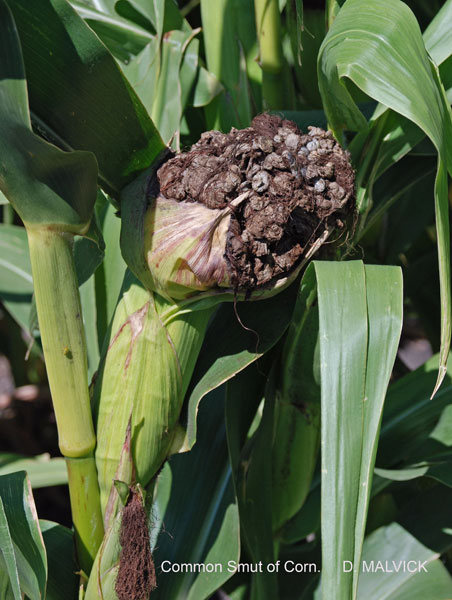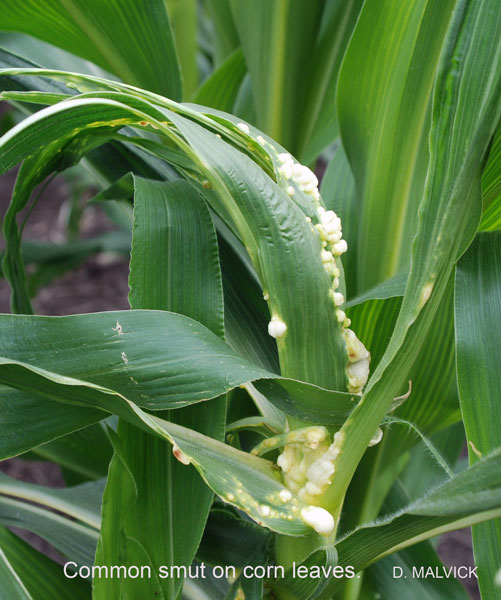Common smut is common in most places were corn is grown, but does not usually cause significant economic losses.
Symptoms
Galls (abnormal growths) can appear anytime throughout the growing season on any above ground plant part. Young, actively growing tissue is especially susceptible. Galls commonly develop on ears, leaves, stalk, or tassels and are initially covered with white to silvery tissue. Later, dark masses of spores develop inside the galls. Leaf galls generally remain small.
Conditions and timing that favor disease
Common smut is often most severe when young tissue is wounded by hail, wind, or mechanical damage. Rainy, wet weather may enhance this disease, as may poor pollination and excessive nitrogen fertilization. Dry or other conditions that interfere with pollination may also favor common smut infection of ears.
Causal pathogen
The pathogen is a fungus called Ustilago maydis. It overwinters in crop debris or soil and can remain viable for several years.
Disease management
This disease can be managed with resistant hybrids, crop rotation, and by maintaining proper soil fertility.
Reviewed in 2018




